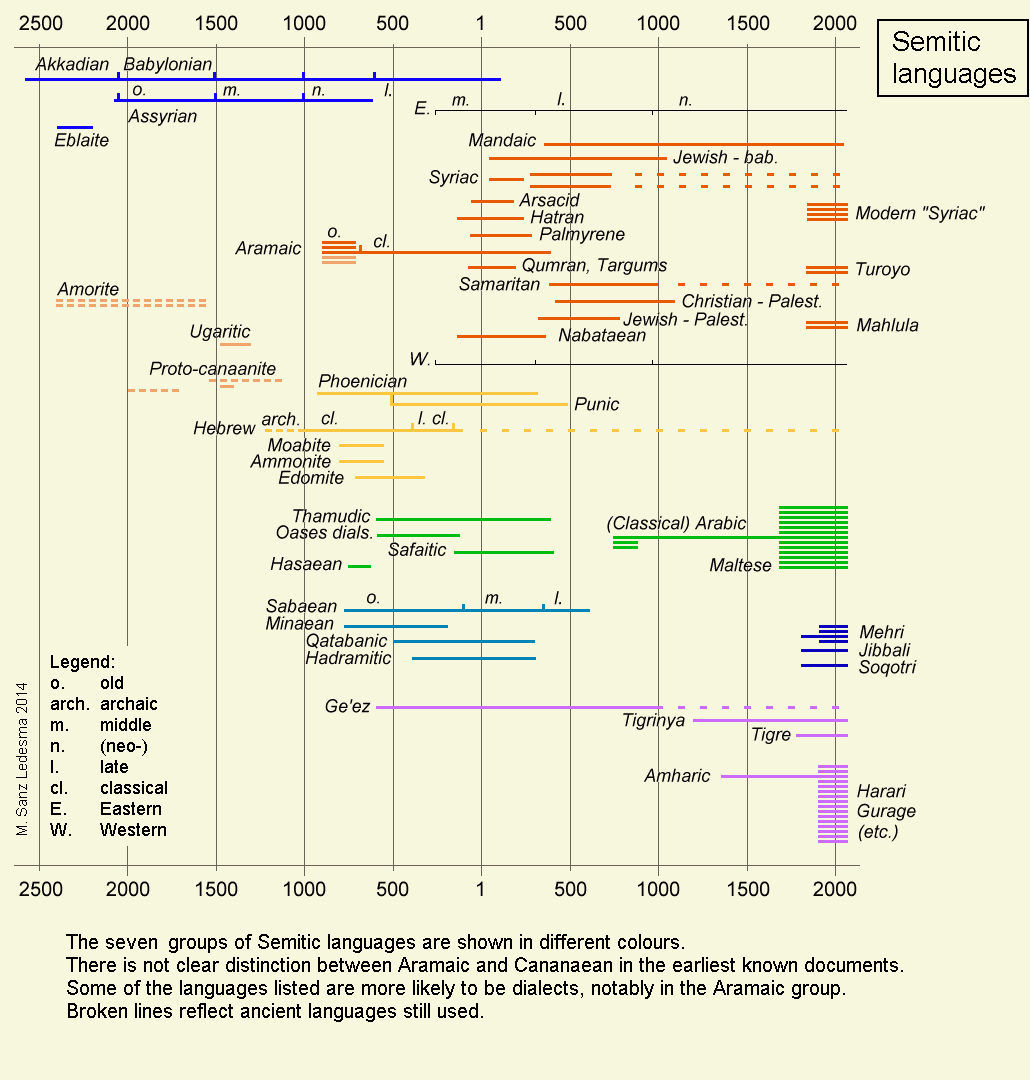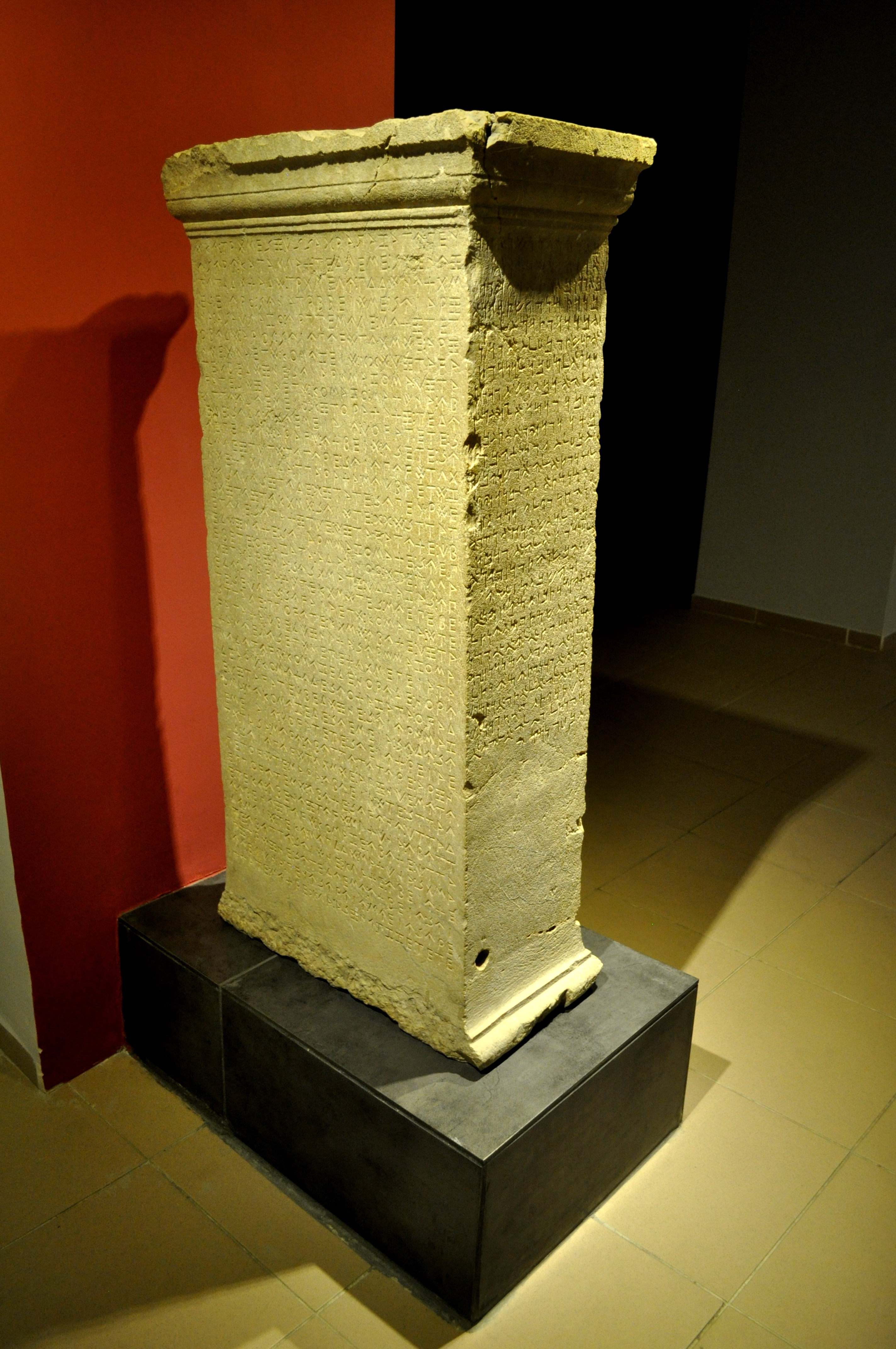|
Samalian
Samalian was a Semitic language spoken and first attested in Samʼal. Samalian is primarily known from three inscriptions, the Hadad Statue and the Panamuwa II inscription ( KAI 214–215), both unearthed in the late 19th century, and a third known as the Kuttamuwa stele, unearthed in 2008. Classification Among the Semitic languages, Samalian shows most similarities to Aramaic. It has been earlier often considered an outright early dialect of Aramaic, possibly influenced by Canaanite. Strong evidence is however absent, and Samalian is best considered an independent member of the Northwest Semitic group, or, together with the Deir Alla Inscription, a sister variety of Aramaic in an "Aramoid" or "Syrian" group. Linguistic features Features connecting Samalian with Aramaic include: * a change *n > ''r'' in the word ''br'' 'son', though this is attested only as a part of personal names and may not have been the native word. The same phenomenon appears also in a Phoenician te ... [...More Info...] [...Related Items...] OR: [Wikipedia] [Google] [Baidu] |
Semitic Languages
The Semitic languages are a branch of the Afroasiatic languages, Afroasiatic language family. They include Arabic, Amharic, Tigrinya language, Tigrinya, Aramaic, Hebrew language, Hebrew, Maltese language, Maltese, Modern South Arabian languages and numerous other ancient and modern languages. They are spoken by more than 330 million people across much of Western Asia, West Asia, North Africa, the Horn of Africa, Malta, and in large Immigration, immigrant and Expatriate, expatriate communities in North America, Europe, and Australasia. The terminology was first used in the 1780s by members of the Göttingen school of history, who derived the name from Shem, one of the three Generations of Noah, sons of Noah in the Book of Genesis. Semitic languages List of languages by first written account, occur in written form from a very early historical date in West Asia, with East Semitic languages, East Semitic Akkadian language, Akkadian (also known as Ancient Assyrian language, Assyrian ... [...More Info...] [...Related Items...] OR: [Wikipedia] [Google] [Baidu] |
Northwest Semitic Languages
Northwest Semitic is a division of the Semitic languages comprising the indigenous languages of the Levant. It emerged from Proto-Semitic in the Early Bronze Age. It is first attested in proper names identified as Amorite in the Middle Bronze Age. The oldest coherent texts are in Ugaritic, dating to the Late Bronze Age, which by the time of the Bronze Age collapse are joined by Old Aramaic, and by the Iron Age by Sutean and the Canaanite languages (Hebrew, Phoenician/ Punic, Edomite and Moabite). The term was coined by Carl Brockelmann in 1908,The Semitic Languages: An International Handbook, Chapter V page 425 who separated Fritz Hommel's 1883 classification of |
Northwest Semitic
Northwest Semitic is a division of the Semitic languages comprising the indigenous languages of the Levant. It emerged from Proto-Semitic language, Proto-Semitic in the Early Bronze Age. It is first attested in proper names identified as Amorite language, Amorite in the Middle Bronze Age. The oldest coherent texts are in Ugaritic language, Ugaritic, dating to the Late Bronze Age, which by the time of the Bronze Age collapse are joined by Old Aramaic, and by the Iron Age by Sutean language, Sutean and the Canaanite languages (Hebrew language, Hebrew, Phoenician language, Phoenician/Punic language, Punic, Edomite language, Edomite and Moabite language, Moabite). The term was coined by Carl Brockelmann in 1908,-ṣṭ- in the Dt stem in Hebrew (hiṣṭaddēḳ ‘he declared himself righteous’) suggests backing rather than glottalization. The same assimilation is attested in Aramaic (yiṣṭabba ‘he will be moistened’). Grammar Nouns Three cases can be reconstructed for ... [...More Info...] [...Related Items...] OR: [Wikipedia] [Google] [Baidu] |
Old Aramaic
Old Aramaic refers to the earliest stage of the Aramaic language, known from the Aramaic inscriptions discovered since the 19th century. Emerging as the language of the city-states of the Arameans in the Fertile Crescent in the Early Iron Age, Old Aramaic was adopted as a ''lingua franca'', and in this role was inherited for official use by the Achaemenid Empire during classical antiquity. After the fall of the Achaemenid Empire, local vernaculars became increasingly prominent, fanning the divergence of an Aramaic dialect continuum and the development of differing written standards. The language is considered to have given way to Middle Aramaic by the 3rd century (a conventional date is the rise of the Sasanian Empire in 224 AD). Ancient Aramaic "Ancient Aramaic" refers to the earliest known period of the language, from its origin until it becomes the ''lingua franca'' of the Fertile Crescent and Bahrain. It was the language of the Aramaean city-states of Damascus, Guzana, ... [...More Info...] [...Related Items...] OR: [Wikipedia] [Google] [Baidu] |
Aramaic Languages
Aramaic (; ) is a Northwest Semitic language that originated in the ancient region of Syria and quickly spread to Mesopotamia, the southern Levant, Sinai, southeastern Anatolia, and Eastern Arabia, where it has been continually written and spoken in different varieties for over three thousand years. Aramaic served as a language of public life and administration of ancient kingdoms and empires, particularly the Neo-Assyrian Empire, Neo-Babylonian Empire, and Achaemenid Empire, and also as a language of divine worship and religious study within Judaism, Christianity, and Gnosticism. Several modern varieties of Aramaic are still spoken. The modern eastern branch is spoken by Assyrians, Mandeans, and Mizrahi Jews.{{cite book , last1=Huehnergard , first1=John , author-link1=John Huehnergard , last2=Rubin , first2=Aaron D. , author-link2=Aaron D. Rubin , date=2011 , editor-last=Weninger , editor-first=Stefan , title=The Semitic Languages: An International Handbook , publishe ... [...More Info...] [...Related Items...] OR: [Wikipedia] [Google] [Baidu] |
Panamuwa II Inscription
The Panamuwa II inscription is a 9th-century BC stele of King Panamuwa II, from the Kingdom of Bit-Gabbari in Sam'al. It currently occupies a prominent position in the Vorderasiatisches Museum Berlin. The 23 line inscription was discovered in 1888 during the 1888-1902 German Oriental Society expeditions led by Felix von Luschan and Robert Koldewey Robert Johann Koldewey (10 September 1855 – 4 February 1925) was a German archaeologist, famous for his in-depth excavation of the ancient city of Babylon in modern-day Iraq. He was born in Blankenburg am Harz in Germany, the duchy of Brunswick .... Similar to the Hadad Statue, the inscription is on the base of a pillar-shaped statue. It was written by Panamuwa II's son Bar Rakib in the Samalian language, considered to be on a dialect continuum between Phoenician and Aramaic. The inscription mentions Tiglath-Pileser III. Text The text of the inscription below is presented in George Albert Cooke's 1903 "Text-book of North-S ... [...More Info...] [...Related Items...] OR: [Wikipedia] [Google] [Baidu] |
Kanaanäische Und Aramäische Inschriften
Kanaanäische und Aramäische Inschriften (in English, Canaanite and Aramaic Inscriptions), or KAI, is the standard source for the original text of Canaanite and Aramaic inscriptions not contained in the Hebrew Bible. It was first published from 1960 to 1964 in three volumes by the German orientalists Herbert Donner and Wolfgang Röllig, and has been updated in numerous subsequent editions. The work attempted to "integrate philology, palaeography and cultural history" in the commented re-editing of a selection of Canaanite and Aramaic Inscriptions, using the "pertinent source material for the Phoenician, Punic, Moabite, pre-exile-Hebrew and Ancient Aramaic cultures." Röllig and Donner had the support of William F. Albright in Baltimore, James Germain Février in Paris and Giorgio Levi Della Vida in Rome during the compilation of the first edition. Editions The 4th edition was published between 1966 and 1969, and a 5th edition was published in 2002. However, the 5th edit ... [...More Info...] [...Related Items...] OR: [Wikipedia] [Google] [Baidu] |
Canaanite And Aramaic Inscriptions
The Canaanite and Aramaic inscriptions, also known as Northwest Semitic inscriptions, are the primary extra-Biblical source for understanding of the societies and histories of the ancient Phoenicians, Ancient Hebrews, Hebrews and Arameans. Semitic inscriptions may occur on stone slabs, pottery ostraca, ornaments, and range from simple names to full texts. The older inscriptions form a Canaanite languages, Canaanite–Aramaic dialect continuum, exemplified by writings which scholars have struggled to fit into either category, such as the Stele of Zakkur and the Deir Alla Inscription. The Northwest Semitic languages are a language group that contains the Aramaic, Aramaic language, as well as the Canaanite languages including Phoenician language, Phoenician and Hebrew language, Hebrew. Languages The old Aramaic period (850 to 612 BC) saw the production and dispersal of inscriptions due to the rise of the Arameans as a major force in Ancient Near East. Their language was adopted a ... [...More Info...] [...Related Items...] OR: [Wikipedia] [Google] [Baidu] |
Hadad Statue
The Hadad Statue is an 8th-century BC stele of King Panamuwa I, from the Kingdom of Bit-Gabbari in Sam'al. It is currently occupies a prominent position in the Vorderasiatisches Museum Berlin. The inscription was discovered in 1890 in a village north east of Sam’al, during the period of the 1888-1902 German Oriental Society expeditions led by Felix von Luschan and Robert Koldewey. The 34 line inscription is written in the Samalian language, considered to be on a dialect intermediate between Phoenician and Aramaic. Translation Capital letters indicate an untranslated proper name. The translation of the stele: "I am Panamuwa, son of Qarli, king of , who have erected this statue for Hadad in my eternal abode (burial chamber). The gods Hadad and El and Rašap and Rākib-El and Šamaš supported me. Hadad and El and Rākib-El and Šamaš and Rašap gave the scepter of dominion into my hands. Rašap supported me. So whatever I grasped with my hand ��and whatever I asked from ... [...More Info...] [...Related Items...] OR: [Wikipedia] [Google] [Baidu] |
Byblos
Byblos ( ; ), also known as Jebeil, Jbeil or Jubayl (, Lebanese Arabic, locally ), is an ancient city in the Keserwan-Jbeil Governorate of Lebanon. The area is believed to have been first settled between 8800 and 7000BC and continuously inhabited since 5000BC. During its history, Byblos was part of numerous cultures including Old Kingdom of Egypt, Egyptian, Phoenician, Assyrian, Achaemenid Empire, Persian, Hellenistic period, Hellenistic, Roman Empire, Roman, Genoese Republic, Genoese, Mamluk Sultanate, Mamluk and Ottoman Empire, Ottoman. Urbanisation is thought to have begun during the third millennium BC when it developed into a city, making it one of the List of oldest continuously inhabited cities, oldest cities in the world, if not the oldest. It is a UNESCO World Heritage Site. It was in Ancient Byblos that the Phoenician alphabet, likely the ancestor of the Greek alphabet, Greek, Latin and all other Western alphabets, was developed. Etymology The name appears as ''Keb ... [...More Info...] [...Related Items...] OR: [Wikipedia] [Google] [Baidu] |
Languages Attested From The 1st Millennium BC
Language is a structured system of communication that consists of grammar and vocabulary. It is the primary means by which humans convey meaning, both in spoken and signed language, signed forms, and may also be conveyed through writing system, writing. Human language is characterized by its cultural and historical diversity, with significant variations observed between cultures and across time. Human languages possess the properties of Productivity (linguistics), productivity and Displacement (linguistics), displacement, which enable the creation of an infinite number of sentences, and the ability to refer to objects, events, and ideas that are not immediately present in the discourse. The use of human language relies on social convention and is acquired through learning. Estimates of the number of human languages in the world vary between and . Precise estimates depend on an arbitrary distinction (dichotomy) established between languages and dialects. Natural languages are ... [...More Info...] [...Related Items...] OR: [Wikipedia] [Google] [Baidu] |





